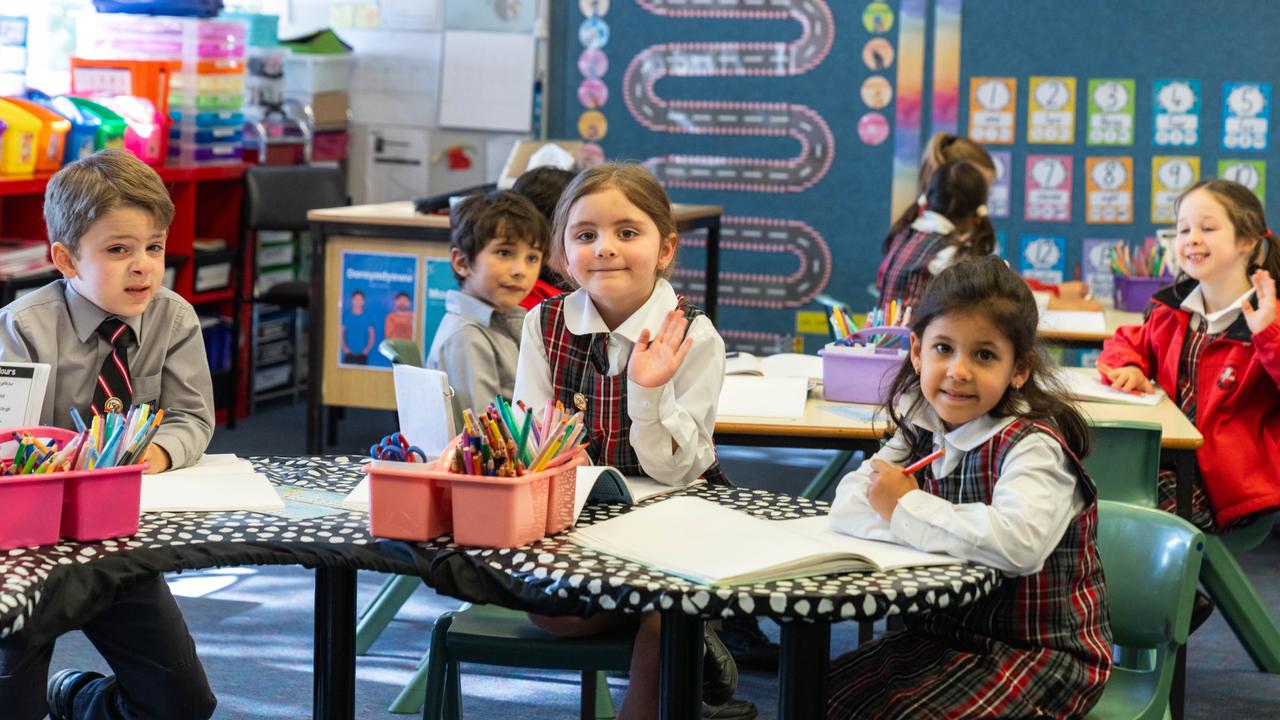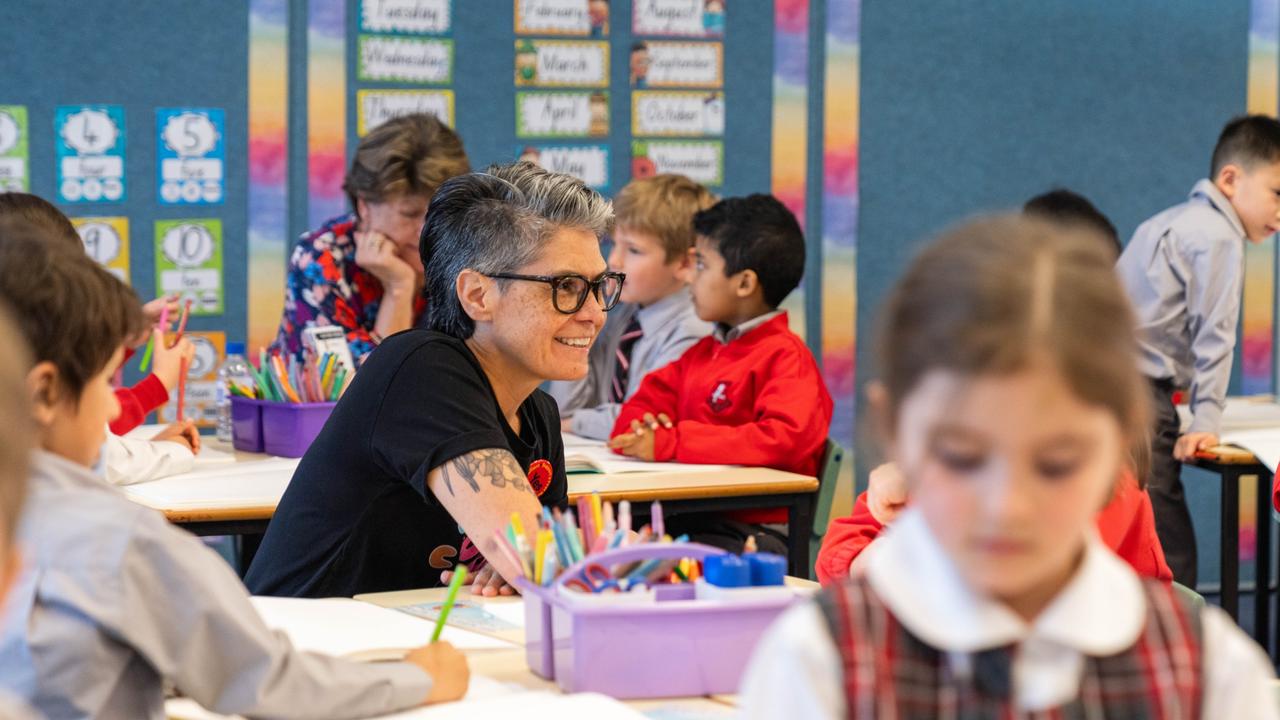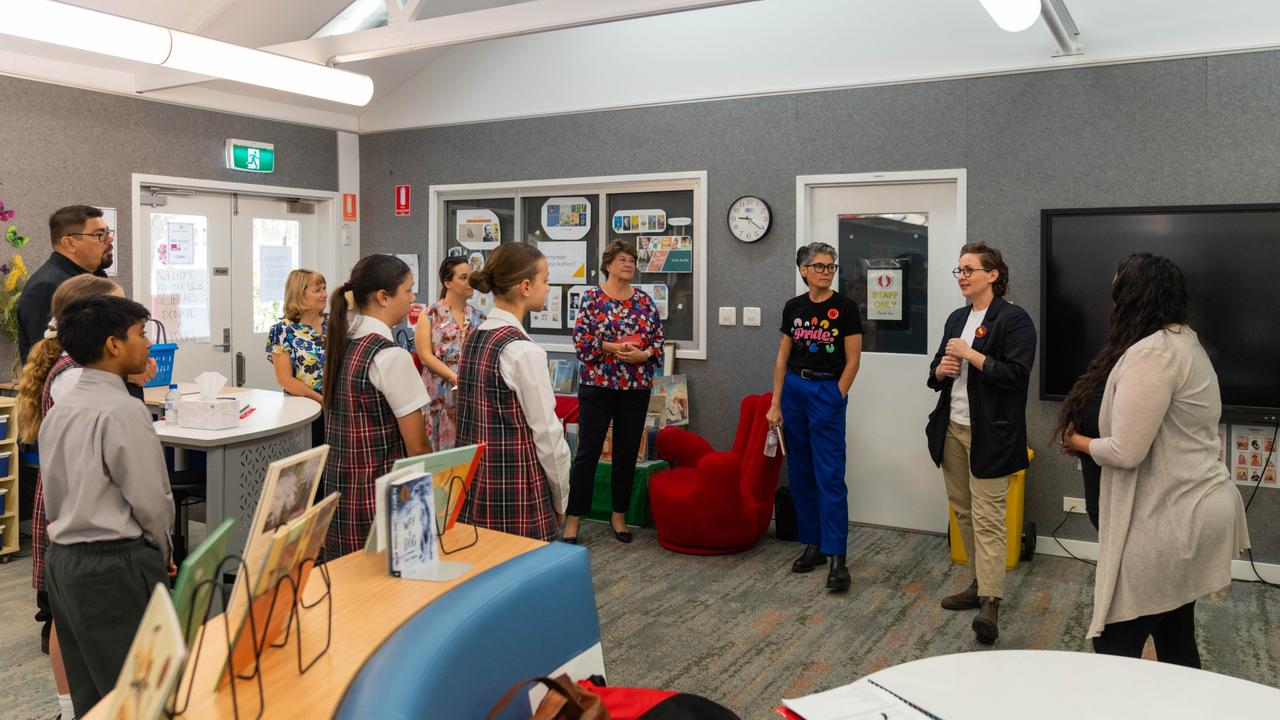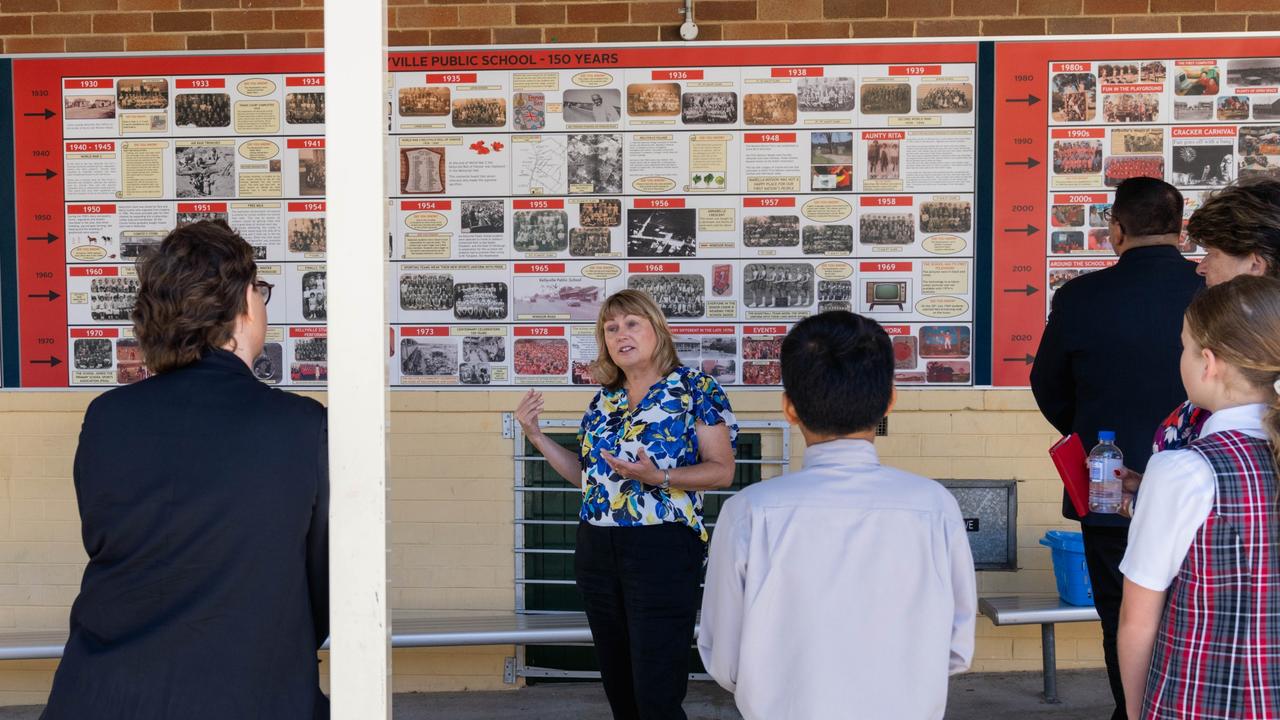Aussie school students bring to life their Reconciliation Action Plan
Students and teachers at Kellyville Public School share their commitment to truth telling and Reconciliation after being named finalists in this year’s national Narragunnawali Awards

READING LEVEL: ORANGE
For these primary school kids, Reconciliation comes straight from the heart.
The students and staff at Kellyville Public School have been recognised for their efforts in teaching the true history of the First Nations people of Darug Country in western Sydney.
The school was named a finalist at this year’s Narragunnawali Awards – a two yearly event run by Reconciliation Australia that celebrates the country’s schools and early learning centres working hard to achieve Reconciliation.
For the past 10 years, the school community at Kellyville PS has been involved in a RAP – but not the kind you sing to music.
WHAT IS A RAP?
A Reconciliation Action Plan (RAP) is a hands-on plan to “develop Reconciliation between our First Australians and the wider community,” said Kellyville PS student learning support officer Jenny Heffernan.
“It is essential schools create a RAP to ensure Aboriginal and Torres Strait Islander perspectives are authentically taught,” she said.
When Ms Heffernan went to school in the 1960s, the true history of the First Australians was not taught to children – or even adults.
Thanks to the work of schools like Kellyville PS, students and their families have learnt the extent of just how poorly our First Nations people were treated in the past.

UNCOVERING THE SECRETS OF THE PAST
Through the RAP, Darug Elder Aunty Rita Wright has been able to tell her story as a member of the Stolen Generation. She and her older sister were taken from their parents when she was just two years old and sent to live at the Marella Mission, which used to stand at the nearby Bernie Mullane sports oval.
“The children from Marella Mission were not allowed to attend Kellyville Public School and had to travel to Castle Hill Public School,” Ms Heffernan said. “They were not educated and were told to ‘look out the window’.”
Year 6 student Eve said she felt “shocked” when she found out her local sports oval used to be a mission where First Nations children were made to sleep in chicken coups and sheds and were forced to work.
Fellow year 6 student Holly said there were no signs telling people the mission used to be there.
“If you don’t know about it, then you wouldn’t know it happened,” she said.

BRIDGING THE PAST
Members of the Stolen Generation like Aunty Rita weren’t allowed to speak their language and grew up without knowing about their culture.
As part of the RAP, students have been given the opportunity to take part in the school’s “Place of Kookaburras” garden, where local Darug knowledge is passed on from student to student as they connect with Country to become custodians.
Part of the project involved building the “Coming Together Bridge”, or Garribirri Ngyrlangai in Darug, which has become “a powerful symbol of Reconciliation … representing the merging of past and present,” Ms Heffernan said.
The school also made a timeline showing the true history of First Nations people.

CONNECTION TO COUNTRY
School principal Jenny Walker said it was important for students to have a hands-on role in learning Reconciliation.
“It’s got to come from the heart and it’s got to come from the truth,” she said.
Eve said taking part in the program made her feel happy.
“It really made me have a connection to what we are standing on and the kind of country it really is,” she said.
SHARING THE TRUE HISTORY
Through the RAP, students have been able to pass on knowledge that their parents never had the opportunity to learn at school.
“My parents are really intrigued,” Eve said. “Because they were just taught what other people wanted them to be taught, rather than being taught the truth.”
Year 6 student Ethann said he was proud of his school’s RAP.
“Reconciliation means remembering the mistakes that were made and working together to have a better future for everyone,” he said.

Winterfold Primary School, on Noongar Country in Beaconsfield, Western Australia, was the winner in the school category of this year’s Narragunnawali Awards, announced on Friday at the National Museum of Australia in Canberra.
Reconciliation Australia CEO Karen Mundine said it was heartening to see so many schools adopt RAPs.
“Young Australians are opening their hearts and gaining the skills to effectively contribute to Reconciliation,” she said.

POLL
GLOSSARY
- Narragunnawali: a Ngunnawal word meaning alive, wellbeing, coming together and peace
- Reconciliation: strengthening relationships between Aboriginal and Torres Strait Islander people and non-Indigenous people, for the benefit of all Australians
- Stolen Generation: Indigenous Australians who were forcibly taken from their parents as children or babies and sent to missions to live
- perspectives: ways of seeing things
- authentically: done in a real and meaningful way
- mission: places run by a church where Indigenous kids were sent to live away from their parents
- custodians: caretakers
- merging: coming together of different things
- intrigued: very interested
- heartening: encouraging or cheering up
EXTRA READING
Nine-year-old YouTuber dreams big
Cricket star bowls out boundaries
Bilingual books take centre stage
QUICK QUIZ
1. What does RAP stand for?
2. Why is it important for schools to be involved in a RAP?
3. What do the Narragunnawali awards recognise?
4. Who won in the school category this year?
5. What does reconciliation mean to Year 6 student Ethann?
LISTEN TO THIS STORY
CLASSROOM ACTIVITIES
1. Reconciliation meeting place at your school
Design a reconciliation meeting place for your school to respect the First Nations People.
You need to research or use your and your school’s knowledge of the local area and Indigenous people to meet the needs and relevance of your community.
Sketch your design, name your areas in the local language and describe what features it involves.
Time: allow 30 minutes to complete this activity
Curriculum Links: English, History, Personal and Social, Critical and Creative Thinking
2. Extension
Research the First Nations people from your local area.
What do you know about them?
What questions do you have for them?
How did their growing up compare to yours?
Write a list of things that were the same and different.
Time: allow 30 minutes to complete this activity
Curriculum Links: English, History, Personal and Social, Critical and Creative Thinking
VCOP ACTIVITY
Grammar and VCOP
The glossary of terms helps you to understand and learn the ambitious vocabulary being used in the article. Can you use the words outlined in the glossary to create new sentences? Challenge yourself to include other VCOP (vocabulary, connectives, openers and punctuation) elements in your sentence/s. Have another look through the article, can you find any other Wow Words not outlined in the glossary?